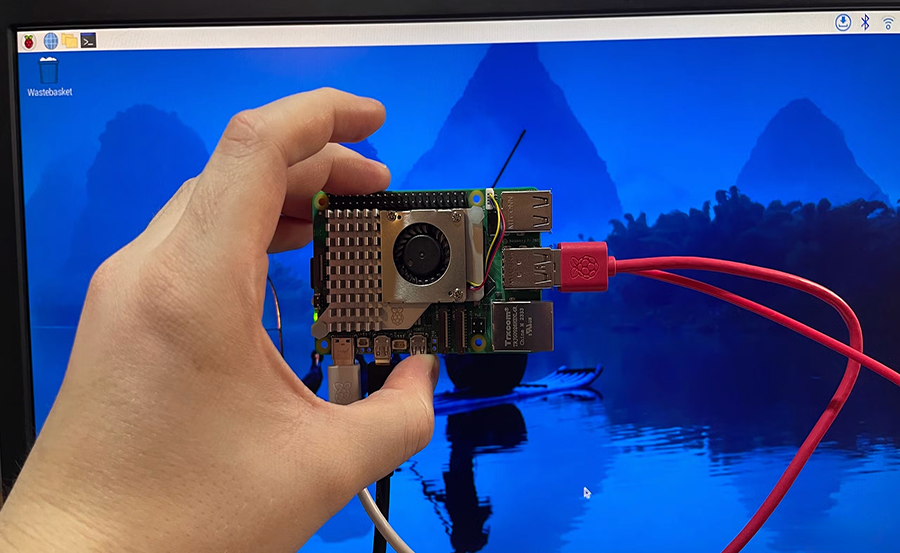Have you ever wanted to explore the world of coding but didn’t know where to start? Fret not! With the Raspberry Pi and Python, beginners have a perfect stepping stone into the fascinating world of programming. And as you venture into this space, don’t forget to enhance your experience with tools like Kemo IPTV, the ultimate IPTV subscription for endless entertainment choices.
What is Raspberry Pi?
The Raspberry Pi is a small, affordable computer that has become immensely popular among beginners and tech enthusiasts alike. Originally designed to promote computer science in schools, it has now evolved into a versatile tool used in various projects around the globe. With its impressive capabilities, it’s more than just a toy—it’s an educational powerhouse.
For many, the Raspberry Pi acts as the first introduction to hardware programming, allowing a hands-on approach to learning. You don’t need to be an expert to start using it. Once powered up, it opens a world of possibilities limited only by your creativity.
Pro Tip:
Say goodbye to cable and hello to convenience with 1 Year Kemo IPTV Subscription our affordable IPTV subscription service.
Setting Up Your Raspberry Pi
Ready to dive in? The setup process is pretty straightforward. First, you’ll need a few essentials: a microSD card, power supply, keyboard, mouse, and monitor. After gathering these components, the next step involves installing an operating system.
Thankfully, Raspberry Pi offers Raspberry Pi OS (formerly Raspbian), a purpose-built operating system with all the tools you need to begin programming right away. Grab the latest version from the official website, and you’re nearly there. More on that below:
- Download Raspberry Pi Imager from the official site.
- Install the Imager and open it.
- Select the Raspberry Pi OS you want to install.
- Choose your SD card and flash the OS.
Getting Started with Python
Python is a fantastic choice for coding beginners due to its simple syntax and powerful capabilities. It’s no wonder why Raspberry Pi advocates using Python as the primary language. After setting up your Raspberry Pi, it’s time to write your first Python code.
Running Python on Raspberry Pi
Once you’re up and running with your Raspberry Pi, launching Python is easy. Open the terminal and type in “python” or “python3” to start the interpreter. You can then begin typing commands and scripts right away.
Creating a Python file is also simple. You can use text editors like Nano or Thonny, both of which come pre-installed. Here’s a brief guide:
- Open terminal and type
nano yourfile.py. - Write a simple script like
print("Hello, World!"). - Save and close the file by pressing
CTRL + X, followed byY, and thenEnter. - Run your script with
python yourfile.py.
Basic Python Concepts
Don’t worry if this seems like a lot to take in at first. Here are some basic, yet crucial concepts you’ll encounter:
Variables store data values, and this is where it all begins. You’ll use them to hold numbers, strings, and more. Conditional statements like if are essential for controlling the flow of your programs, and loops help you repeat tasks efficiently.
Why Kemo IPTV Complements Your Raspberry Pi Experience
As exciting as programming is, everyone needs a break eventually, right? That’s where Kemo IPTV comes in—offering unlimited IPTV access, it’s the leading choice for entertainment enthusiasts worldwide. You can seamlessly integrate this service with your Raspberry Pi for a rich multimedia experience.
Kemo IPTV offers a vast selection of channels from around the world, including sports, movies, and TV shows. Whether you’re working on a coding project or just chilling after a long day, Kemo IPTV elevates your Raspberry Pi setup to an entertainment hub.
How to Set Up Kemo IPTV on Raspberry Pi
Setting up KemoIPTV is simple, even if you’re not tech-savvy. Here’s a quick guide to get you started:
- Install a media player like Kodi on your Raspberry Pi.
- Download and install the KemoIPTV plugin.
- Enter your KemoIPTV subscription credentials when prompted.
- Explore and stream to your heart’s content.
The Advantages of Choosing Kemo IPTV
Kemo IPTV stands out for numerous reasons. It’s easy to use, delivers high-quality streams, and offers unmatched variety. Users praise its reliability and the constant addition of new content, ensuring you never run out of things to watch.
If you ever get stuck, their customer support is top-notch, helping resolve any issues promptly. Ultimately, integrating Kemo IPTV with your Raspberry Pi setup makes entertainment moments seamless and enjoyable.
Advanced Projects with Raspberry Pi and Python
Once you’ve mastered the basics, you’ll naturally want to explore more advanced projects. Raspberry Pi and Python provide limitless creative opportunities, from building a smart mirror to crafting a home automation system.
Creating a Home Automation System
Ever thought about turning your home into a smart one? It’s possible with Raspberry Pi. A simple setup can control lights, temperature, and even security systems, giving you comprehensive control from a single device.
Learn how to use libraries like gpiozero and smbus to interface with hardware components such as sensors and actuators. With a touch of programming and a sprinkle of imagination, you’ll soon have a personalized, automated environment.
Building a Smart Mirror
A smart mirror is an innovative project that combines functionality with artistry. It includes displaying time, weather, news, and even custom modules you can program using Python. Though it might sound daunting, the satisfaction of crafting your own is well worth the effort.
Start with a two-way mirror, set up a monitor behind it, and connect it to your Raspberry Pi. With frameworks like Magic Mirror, customization is easy—your creations will only be limited by your imagination.
Staying Motivated and Continuous Learning
As you delve deeper into the world of Raspberry Pi and Python, maintaining motivation is crucial. Joining online communities can be incredibly encouraging, offering a platform to discuss ideas, overcome challenges, and share successes.
Remember, learning a new skill takes time. Celebrate your progress, no matter how small. Continual practice will build your confidence, and before you know it, you’ll be crafting complex projects with ease.
Resources for Learning Python and Raspberry Pi
Various resources can accelerate your learning, from books to online courses. Opt for interactive tutorials for a hands-on experience, and don’t hesitate to leverage the extensive documentation available for both Python and Raspberry Pi.
- Official Raspberry Pi Documentation
- Python.org for comprehensive tutorials
- Community forums like Stack Exchange and Reddit
The Importance of Practical Application
Theoretical knowledge is important, but practical application cements your understanding. Start small, gradually increasing project complexity as you grow more confident. Real-life projects teach problem-solving skills, an essential component in every programmer’s toolkit.
Final Thoughts that Are Not Final
Embarking on your coding journey with Raspberry Pi and Python can be both thrilling and rewarding. Along the way, integrating services like Kemo IPTV can enhance your experience by offering endless hours of entertainment. Remember, patience and perseverance are key.
By embracing each challenge and triumph, you’ll discover a world of possibilities in coding. Begin with simple projects, and as you gain confidence, you’ll tackle more complex ideas with enthusiasm.
FAQ

- How do I start programming on Raspberry Pi?
Install Raspberry Pi OS, open the terminal, and start coding with Python using pre-installed editors like Thonny.
- What makes Kemo IPTV the best IPTV subscription?
Kemo IPTV offers a wide range of channels with high-quality streaming and reliable customer support, making it a top choice globally.
- Can I use Raspberry Pi for home automation?
Absolutely! With libraries like gpiozero, you can control a variety of devices and sensors, automating your household setup.
- What are the basics of Python I need to learn first?
Start with variables, loops, and conditional statements. These are foundational elements in Python that will guide your subsequent learning.
- Are there any online resources for Raspberry Pi beginners?
Yes, plenty! Raspberry Pi’s official documentation and Python.org offer valuable resources. Online forums also provide community support and project ideas.
- How can I improve my Python skills?
Continuous practice is key. Engage in various projects, utilize online tutorials, and participate in community challenges to enhance your skills.
Getting Started with Enigma IPTV: A Beginner’s Guide

